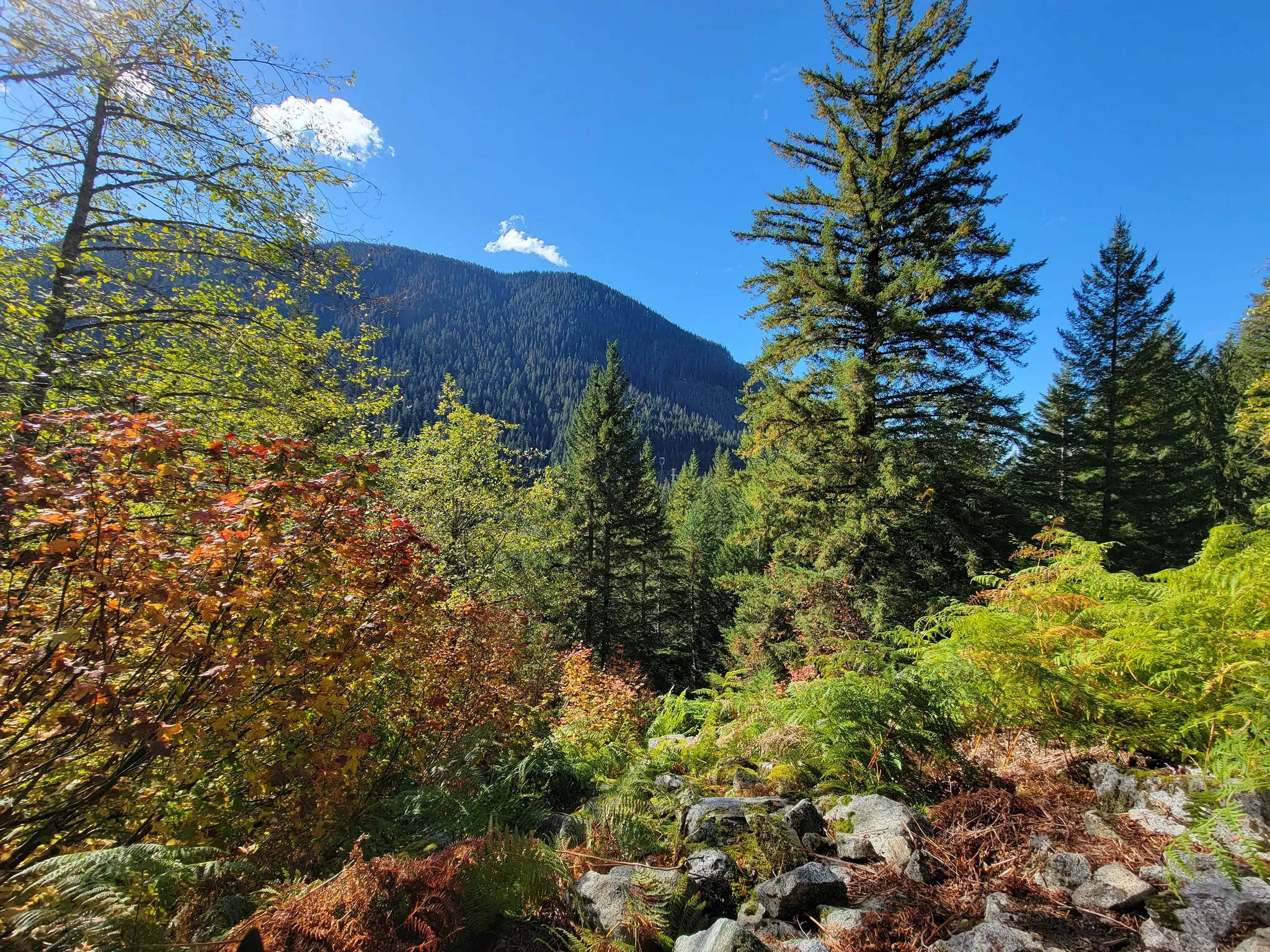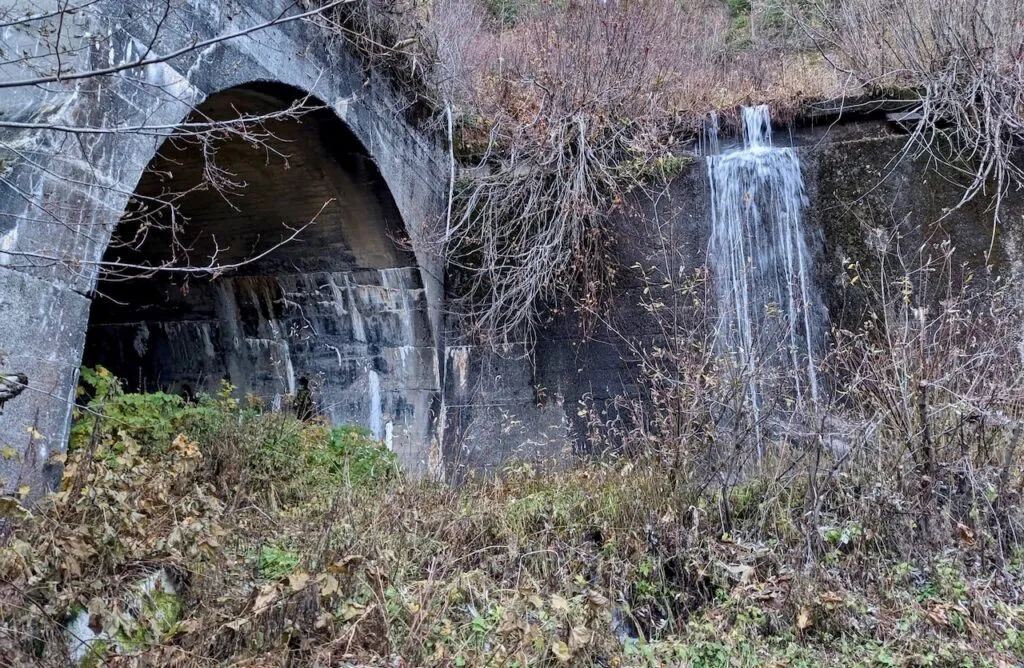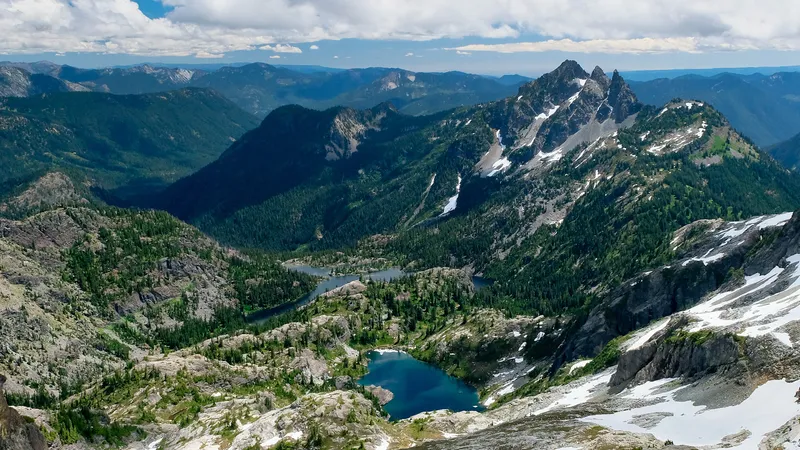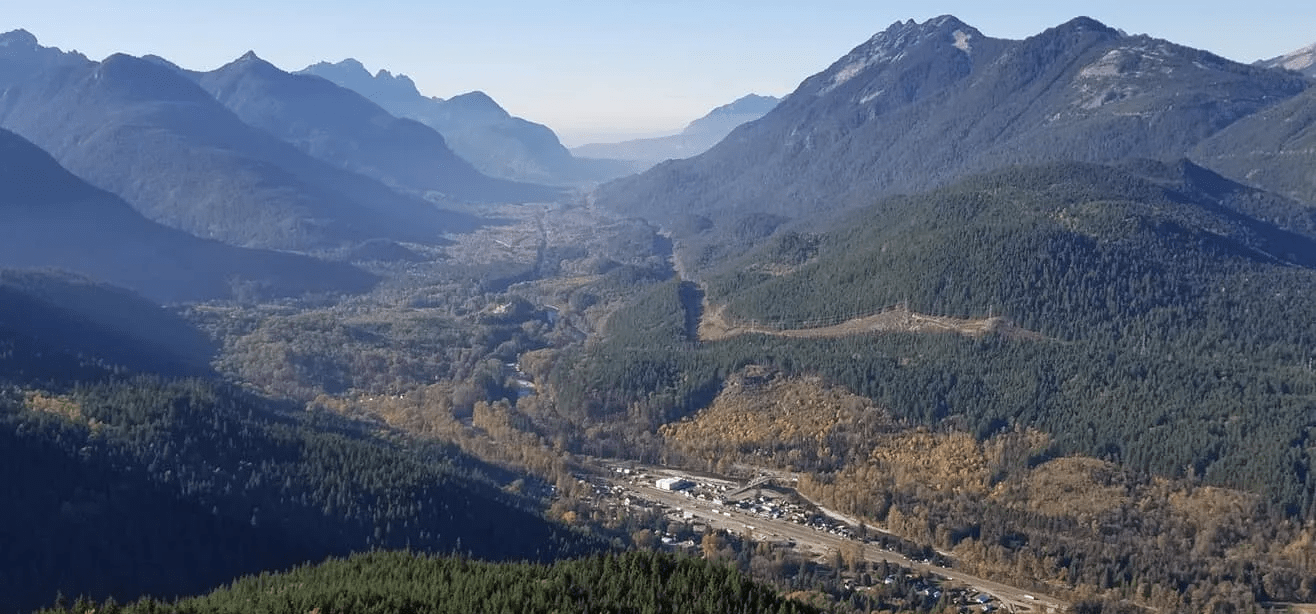The majestic Cascade Range stretches like a rugged spine through the Pacific Northwest, from British Columbia, Canada, down through Washington and Oregon, finally reaching Northern California. This mountain range isn’t just beautiful—it’s home to some of America’s most iconic peaks that draw thousands of adventure seekers each year. The Cascade Range contains dozens of famous mountains, with five particularly notable volcanic peaks: Mount Rainier (14,409 ft), Mount St. Helens, Mount Hood, Mount Baker, and Glacier Peak.
While many visitors know about Mount St. Helens’ dramatic 1980 eruption, fewer realize the Cascades include over 4,375 named mountains along their 700-mile extent. These mountains were formed by the same geological forces that shape the Pacific Ring of Fire, creating not just volcanic peaks but also non-volcanic mountains like those in the North Cascades. Between these summits lie treasures like Crater Lake, the deepest lake in the United States, nestled in the caldera of an ancient volcano.
Find available hotels and vacation homes instantly. No fees, best rates guaranteed!
Check Availability Now
Hiking enthusiasts exploring these famous peaks often discover hidden gems like the Iron Goat Trail in Washington. This historic trail follows the old Great Northern Railway route, offering both spectacular mountain views and fascinating railroad history. As visitors traverse its gentle grade, they can appreciate how these mountains have shaped human experience in the Pacific Northwest while standing in the shadow of the mighty Cascades.
Prominent Peaks of the Cascades
The Cascade Range features several majestic mountains that define the landscape of the Pacific Northwest. These towering peaks, many of which are active volcanoes, draw visitors from around the world for their stunning beauty and challenging terrain.
Mount Rainier: The Iconic Giant
Mount Rainier stands as the undisputed king of the Cascade Range at 14,409 feet, making it the highest peak in the chain. Located in Washington State, this massive stratovolcano is visible from Seattle on clear days, creating a dramatic backdrop to the city’s skyline.
Rainier boasts the most extensive glacier system in the continental United States. These 25 named glaciers cover about 35 square miles of the mountain’s surface, creating a year-round winter wonderland.
For mountaineers, Rainier presents one of North America’s most coveted climbing challenges. Despite thousands attempting the summit each year, the mountain’s unpredictable weather and challenging routes mean only about half succeed.
The mountain’s ecosystem changes dramatically with elevation, from dense forests at its base to alpine meadows and finally bare rock and ice near the summit.
Mount Hood: Pride of Oregon
Mount Hood rises majestically to 11,249 feet as Oregon’s highest peak and most recognizable landmark. Located just 75 miles east of Portland, this stratovolcano’s symmetrical cone makes it a favorite subject for photographers and artists.
Hood features 12 named glaciers and snowfields, supporting year-round skiing at Timberline Lodge, the only such resort in North America. The mountain’s accessibility makes it one of the most climbed peaks in the Cascades.
Unlike some of its neighbors, Mount Hood has been relatively quiet in recent centuries. However, scientists classify it as potentially active, with minor eruptions occurring as recently as the 1800s.
The mountain’s lower slopes host beautiful wildflower meadows in summer months and dense Douglas fir forests. Hikers can explore over 1,200 miles of trails throughout the Mount Hood National Forest.
Mount St. Helens: A Volatile History
Mount St. Helens forever changed America’s understanding of volcanic power when it erupted catastrophically on May 18, 1980. This Washington volcano lost nearly 1,300 feet of elevation during the blast, now standing at 8,366 feet.
The eruption triggered the largest landslide in recorded history and devastated 230 square miles of forest. Today, the mountain stands as a living laboratory where scientists study ecological recovery after volcanic disturbance.
In 2004, the volcano awakened again with a series of smaller eruptions that continued until 2008. These events built a new lava dome inside the crater created by the 1980 blast.
Visitors can now hike to the summit rim and peer into the crater, witnessing firsthand the power of this active volcano within the Cascade Volcanic Arc. The Johnston Ridge Observatory offers educational exhibits about the mountain’s explosive history.
Mount Baker: Guardian of the Puget Sound
Mount Baker rises impressively to 10,781 feet in Washington’s northwestern corner. This glacier-covered volcano is known for holding the world record for most snowfall in a single season—an astounding 1,140 inches (95 feet) in 1998-1999.
Though less frequently climbed than Rainier or Hood, Baker offers spectacular mountaineering routes for experienced climbers. Its relative isolation creates a wilderness experience unlike the more accessible peaks.
Baker’s proximity to the Puget Sound region makes it visible from many locations around Bellingham and even from parts of Vancouver, British Columbia. Steam occasionally rises from Sherman Crater, reminding observers of the mountain’s active nature.
The surrounding Mount Baker Wilderness protects old-growth forests, alpine meadows, and pristine lakes. Wildlife including black bears, mountain goats, and wolverines find refuge on the mountain’s slopes.
Mount Shasta: Northern California’s Beacon
Mount Shasta dominates the landscape of Northern California, towering 14,179 feet above the surrounding terrain. This massive stratovolcano ranks as the second-highest peak in the Cascades, featuring seven named glaciers.
Shasta holds spiritual significance for many Native American tribes and continues to attract spiritual seekers who believe the mountain harbors special energy. The mountain’s imposing presence creates its own weather patterns and can be seen from over 100 miles away.
Geologically, Mount Shasta consists of four overlapping volcanic cones, with the main cone formed during the past 10,000 years. Its most recent eruption occurred in 1786, and scientists consider it potentially active.
Climbers flock to Shasta for its challenging but non-technical routes to the summit. Unlike many Cascade peaks, Shasta stands relatively isolated rather than being part of a connected range, enhancing its dramatic appearance on the horizon.
Geological Wonders and Environmental Features
The Cascade Range showcases an impressive array of geological formations and diverse ecosystems that make it one of North America’s most fascinating mountain ranges. From fiery volcanoes to ancient glaciers, these mountains harbor incredible natural features that support rich biodiversity and attract visitors year-round.
Subduction and Volcanic Activity: Forming the Cascades
The Cascade Range owes its dramatic landscape to powerful geological forces. The mountains formed primarily through subduction, where the Juan de Fuca oceanic plate slides beneath the North American continental plate. This process created the volcanic chain we see today.
The range includes famous volcanoes like Mount St. Helens, which dramatically erupted in 1980, and Mount Rainier, the highest peak in the Cascades at 14,411 feet. These stratovolcanoes are part of the Pacific Ring of Fire, a zone of intense volcanic activity.
Many Cascade peaks show signs of recent activity. Mount Baker, for example, released steam plumes in 1975. The geological history here spans millions of years, with older rocks dating back 40 million years but continuous formation still happening today.
The volcanoes of the Cascades have shaped not only the physical landscape but also the cultural identity of the Pacific Northwest.
Glaciers and Icefields: The Cascades’ Frozen Reservoirs
Despite global warming trends, the Cascade Range still harbors significant glaciers and icefields. Mount Rainier alone supports about 25 major glaciers, making it the most glaciated peak in the contiguous United States.
These frozen reservoirs serve crucial ecological and practical functions. They:
- Store freshwater released during summer months
- Shape the mountains through erosion
- Create distinctive alpine features like cirques and moraines
- Supply drinking water to nearby communities
The glaciers have carved spectacular features like the deep valleys of North Cascades National Park. Alpine lakes dot the landscape, formed in basins scooped out by ancient ice movement.
Climate change threatens these icy treasures, with studies showing significant retreat in recent decades. The Columbia Glacier on Mount Baker, for instance, has lost substantial mass since monitoring began.
Flora and Fauna: Nature’s Abundance in the Cascades
The Cascade Range supports remarkable biodiversity across its varied elevations and microclimates. Lower slopes feature dense coniferous forests of Douglas fir, western hemlock, and cedar.
As elevation increases, the landscape transitions to subalpine meadows bursting with wildflowers during summer months. These colorful displays include lupine, beargrass, and mountain heather.
Wildlife thrives throughout the range. Black bears, elk, and cougars roam the forests, while mountain goats navigate precarious slopes with impressive agility. The mountains’ rivers, particularly on western slopes, provide critical habitat for several salmon species during spawning seasons.
Bird enthusiasts can spot northern spotted owls, varied thrushes, and majestic bald eagles. Each ecosystem within the Cascades hosts specialized plant and animal communities adapted to local conditions.
Recreation and Conservation: Enjoying and Protecting the Mountains
The Cascade Range offers endless recreational opportunities while balancing conservation needs. The mountains are home to numerous protected areas, including:
- National parks: Mount Rainier, North Cascades, and Crater Lake
- Wilderness areas: Alpine Lakes, Goat Rocks, and Mount Jefferson
- National forests: Mount Baker-Snoqualmie, Gifford Pinchot, and Deschutes
Outdoor enthusiasts flock to the Cascades for skiing at resorts like Mount Baker and Mount Hood. Summer brings hikers, backpackers, and mountaineers seeking adventure on countless trails.
Conservation efforts focus on preserving these natural wonders against threats from development, climate change, and overuse. The Iron Goat Trail in Washington’s Cascades exemplifies this balance, offering hikers a glimpse into railroad history while showcasing the range’s natural beauty and geological story.
Find available hotels and vacation homes instantly. No fees, best rates guaranteed!
Check Availability Now




